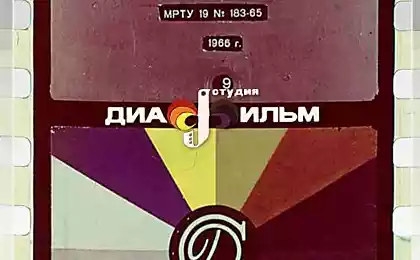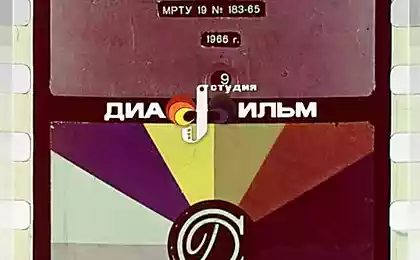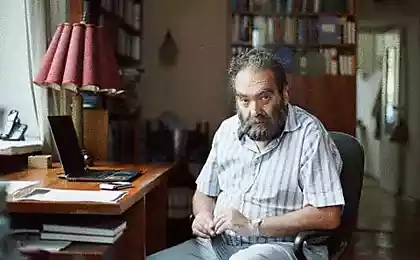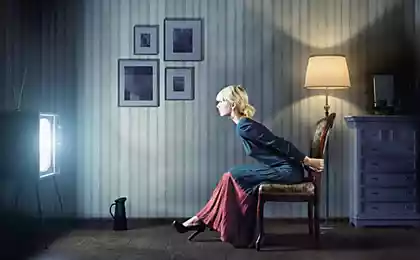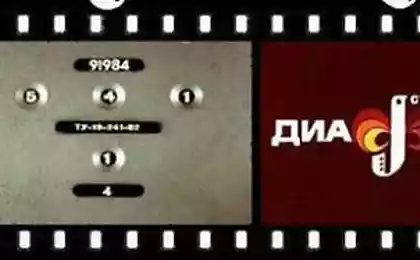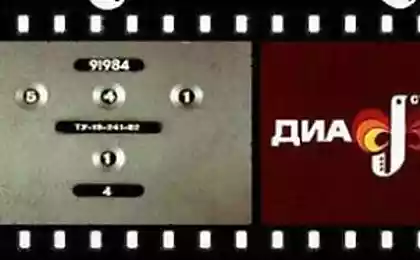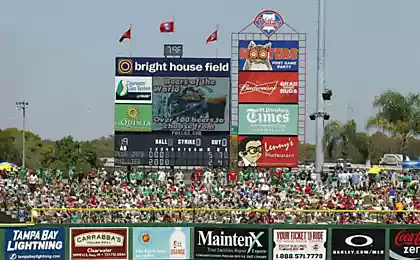1001
History filmstrip
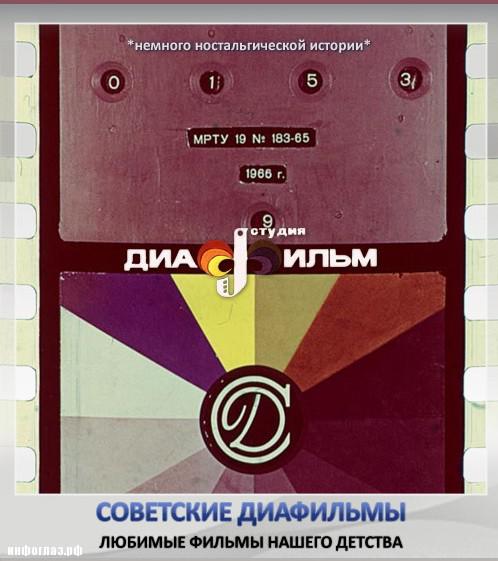
Each one of us cherishes in her heart the memories of childhood. Joyful or sad, light or full of bitterness, they serve as the bridge that connects us today, adult and solid, with the young children, whom we once were. Sometimes, feeling nostalgic for bygone childhood, we extract those memories from the depths of his memory, to return even for a second at the carefree time free from our present problems and concerns.
For many of us such vivid memories may be filmstrips, we watched as a child. Let us remember their history ...

The quiet hum of the projector-filmoskop and bright beam that turns white sheet on the wall in the Etch A Sketch, which alternate color pictures ... all this will forever remain in the memory of the child. Remember the mood at the moment? The joy and impatience, while the older custom objects and charged with the filmstrip in the film projector, your delight in the moment when the wall appears the first frame, and the tale begins ...
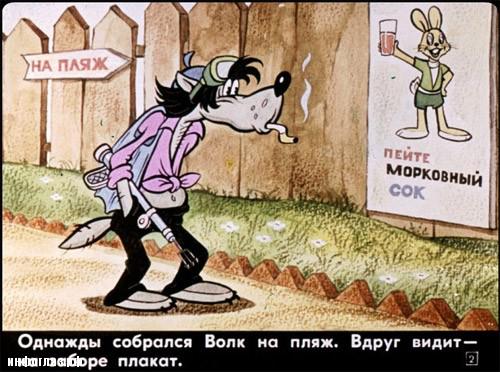
Filmstrip - a series of positive images (slides), united by a common theme in a short film, usually consisting of 20-50 frames. Filmstrip associated with comics, cartoons, book illustrations, but also differs from them. The name itself comes from the Greek δια, which in this context means "the transition from the beginning to the end"; and Eng. film - roll picture (movie) film.
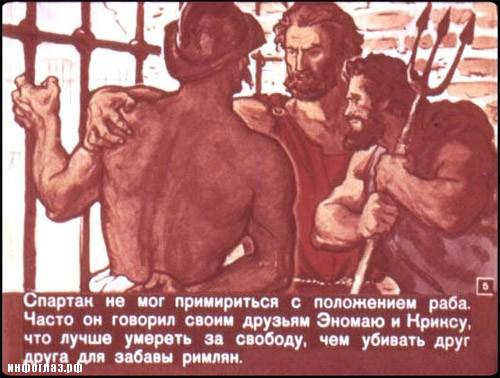
Transparancy film is based on the change of static frames (as opposed to film). Its frame is closer to the easel painting and graphics, so some artists and include the filmstrip to the visual arts.
In the frame filmstrip present movement, expression, like any work of art. This is an issue of the transition from frame to frame, and a combination of adhesion, as well as the problem of compliance with the text of the image.
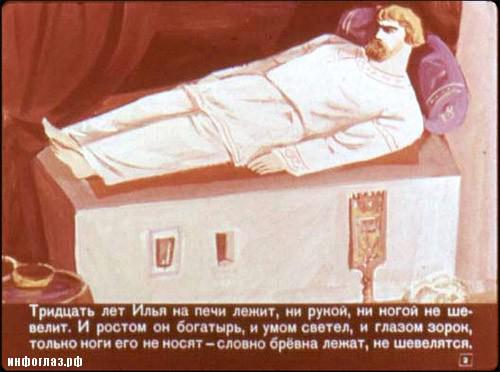
The word "filmstrip" and the subject which it represents, is well known to all adults who grew up in Soviet children. The number of people who do not know what a "filmstrip" is increasing every day. It explains what filmstrip, is not so simple. Because filmstrip - it's not just a story told by means of text and images, divided into frames. It is also a kind of technique presentation viewer stories in which each frame is considered individually.
Filmstrip - it is also a pastime, organized by manual movement of the frame, reading out loud signatures, and the collective by viewing images projected on the screen in the dark.
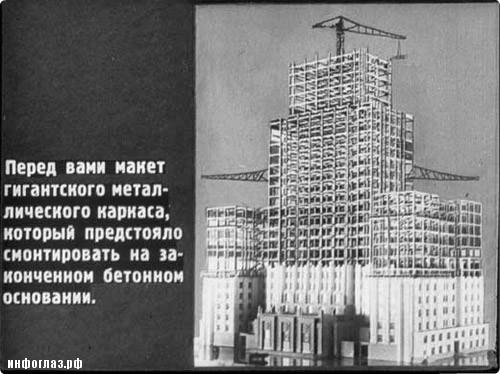
In the second half of the twentieth century, film strips are widely used in the USSR, they were common in everyday life, in particular the establishment of numerous film strips - illustrated tales, historical and literary works. Technical filmstrips designed for the educational process.
Viewing of slides by using filmoskop or slide projector, projecting the image on the screen, in the simplest case, it was a white wall or sheet.
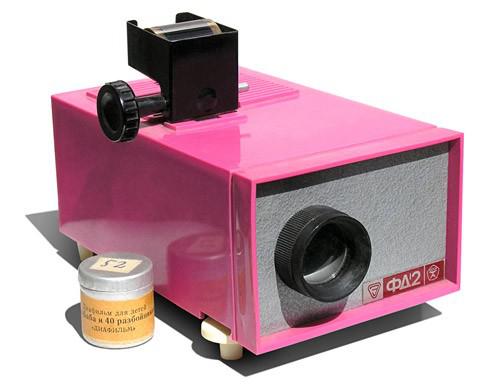
In Western Europe and America at the same time there are some kinds of filmstrips home screen entertainment for children and adults, but in our country the practice of viewing art filmstrips was spread everywhere. Filmstrips helped popularize the art itself is the love and support of the audience.
But the Soviet filmstrip began as a cartoon by the enthusiasts. Filmstrips were new technical step, allowing you to view images using inexpensive equipment.
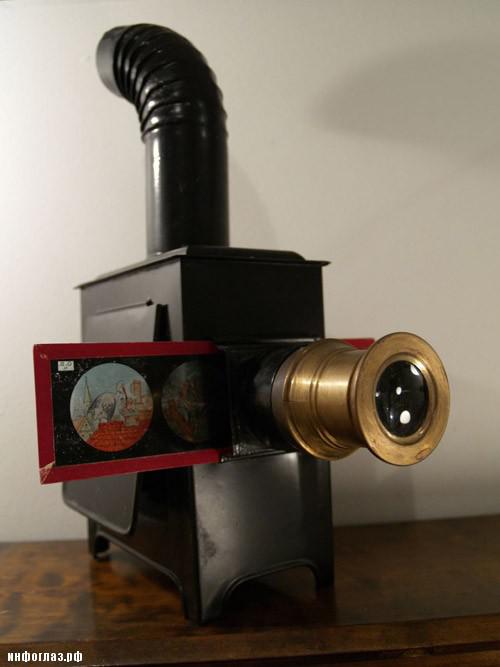
It is interesting to note that the filmstrip appeared much earlier film, and even photography. The earliest devices, magic lanterns, design principles which were not significantly different from overhead projectors of the XX century, belong to the first half of the XVI century.
By the end of the XIX century filmstrip it has already taken a firm place in people's lives. Slides were produced as film or glass. Staged mass demonstrations, mainly in education, at least, for entertainment purposes. In pre-revolutionary Russia were filmstrips on natural science, geography, most of the "misty pictures" was dedicated to the history of the Russian state ("25 years of the reign of Emperor Alexander II», «St. Cyril and Methodius"), were also dramatizations of literary works ("The Ice House" "Masquerade"). The show was accompanied by pictures of reading aloud booklet attached to each picture.
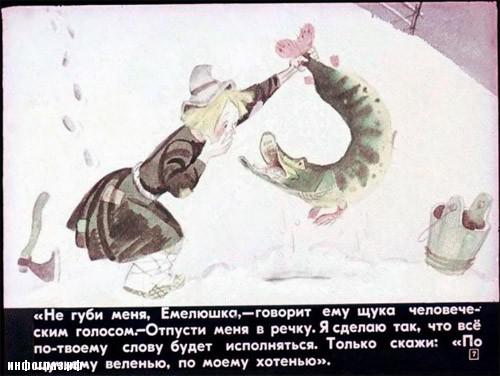
One of the first Soviet overhead projectors unit was called "IZBACH" designed employee Glavpolitprosvet P. Mershin. Built-in dynamo and a rheostat allowed to use it where there was no electricity.
Manufacturing technology filmstrips as illustrative material replaces the prior art use of individual glass slides. Slides were not very comfortable, because they had a lot of weight (manufactured on glass photographic plates) and to store them needed a lot of space.
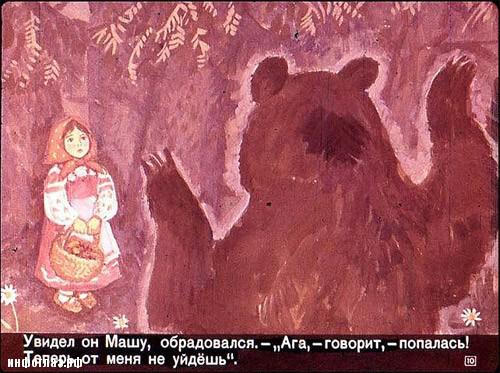
"That would be interesting here to start the projector, - says a senior lecturer in history and theory of culture of Russian State Humanitarian University, Anna Kotomina. - There is such a rhythm - we are lacking in today's world this insane speeds, perpetual information overload - that such slow reading ».
Anna Kotomina, historian, teacher of multimedia technologies, studies filmstrip from a scientific point of view. Assembled a collection in which more than 300 films since the 30s. Her children love watching magic plenochki. Anna is sure: the filmstrip as a huge reservoir of visual culture is not dead - just faded into the background. Her opinion is shared by many professionals.
"Filmstrip was in some measure is unlimited, - said the director, lecturer of the Faculty of VGIK animation and multimedia Olga Gornostaeva. - How is such a primary-forming and tutor of the young spectator. The picture could have been stopped, once again, on the inscriptions could learn to read. That is, unfortunately, a lost culture. This is the place back in full by anyone and does not replace ».
Great-grandfather filmstrip find a magic lantern - Laterna magica, which appeared in Europe in the XVII century. Light - first oil, then kerosene and electric - fell on the hand painted glass and create magic revived images.
Since the end of the XIX century, in addition to entertaining and charming, it appeared at the filmstrip and educational function. With the support of first zemstvos, and later - Soviet propaganda - film strips covered virtually all aspects of life in an accessible form the people acquainted with the classics of literature, taught personal hygiene, behavior in dangerous situations.
At the end of the 20s the production of slides becomes mainstream. In the early 30s there studio "filmstrip". Small and cheap projectors available film penetrated all corners of the country. Millions of people spend cozy family evenings watching - without filmstrip is hard to imagine a happy Soviet childhood. By the way, apart from the fabulous, educational and propaganda she was with him, and the unexpected - the strategic objectives.
"Produces a huge number of slides secret detention - says the last director of the studio" filmstrip "Sergei Skripkin. - That is to say, filmstrips, who trained in weapons, some severe methods of searches. In the production of filmstrips certainly was a Red Army soldier with a gun at the entrance and at the exit, where no one is allowed, and artists worked right there, left their original right there, photographed and taken there.
With the last director of the "filmstrip" Sergei Skripkin we talk in the courtyard of the Lutheran Cathedral of Peter and Paul in Starosadsky Lane, where in Soviet times was located studio. In the last frame of almost every film was the output and the final line - the end of the filmstrip. Skripkin sad jokes phrase proved to be prophetic. The end of the filmstrip Studios began with the eviction of the building of the cathedral.
"It happened so quickly and unexpectedly, - says Sergey Skripkin. - Things got crumble instantly, production ceased, the mass somewhere to send those filmstrips already made. There were huge piles of original filmstrips, including sometimes brilliantly painted, these masterpieces ».
During the sudden collapse of the studio of the unique equipment fatally damaged, some simply disappeared. Through the efforts of staff managed to save more than 20 thousand of sketches to copyright filmstrips. After all, the filmstrip worked the best artists of his time - the same that made the glory of Soviet animation and children's illustration - Avrutis, Repkin, Migunov, Shevchenko, Savchenko. Now these thumbnails are stored in the collections of the Museum of Cinema.
"The oldest filmstrips that we exist in the collection is" The Tale of Tsar Saltan "and" Humpbacked Horse "," - said an employee of the Museum of Cinema Pavel Shvedov.
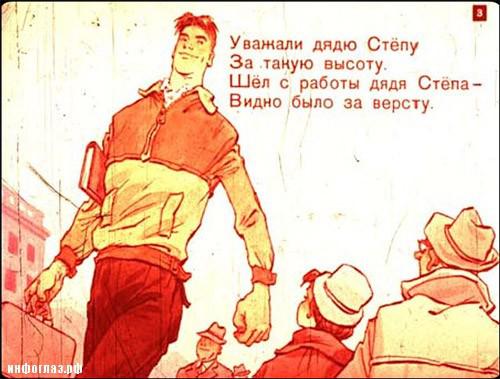
In 1930, in Moscow it was founded Studio "filmstrip" manufactured first black and white and then colored filmstrips. Filmstrips considered as a means of agitation, they were used for training and school, lecture and outreach, they did not require sophisticated equipment, and performance effects were similar to the movies.
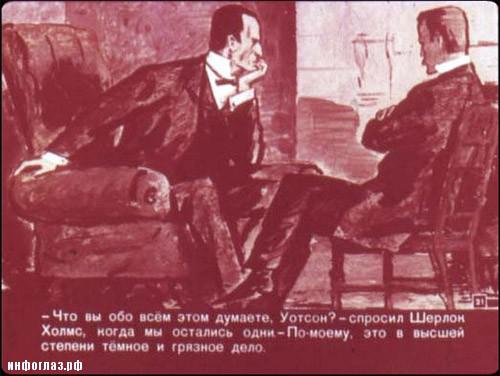
In 1934 he was made the first film strips for the children: "Baggage" and "Fire" (by S. Marshak), "Girl-revushka" (by A. Barto) and several others. Later, there were filmstrips of films ("The New Gulliver" 1940 "Battleship" Potemkin "," The Cranes Are Flying "and so on.).
The Judge "filmstrip" worked as a consultant and author many famous writers: Tolstoy, L. Kassil, K. Chukovsky, S. Marshak, S. Mikhalkov, V. Bianchi and others. In the creation of slides involved artists: E. Evgan, Kukryniksy V. Suteev, K. Rotov, W.Radloff A. Bray and others.
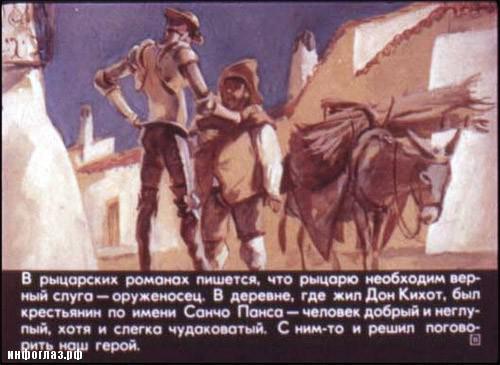
From 60th - 70th. The twentieth century, with the advent of more sophisticated projectors, overhead projectors, kinosёmochnyh and cinema projection apparatus for narrow film (16 mm and 8 mm) allow you to view both old filmstrips and color professional and amateur slides and movies, the decline of "the era of slides».
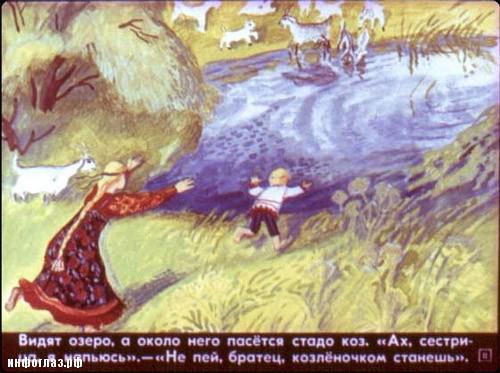
There are now digitized film strips that can be stored on a flash drive or hard drive, and play with a normal projector. Some filmstrips can even look online to niche sites (links we share at the end of the publication).
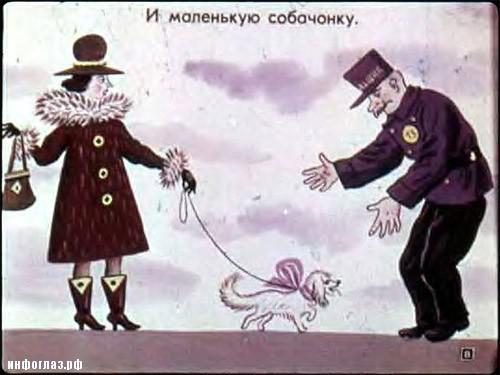
But, perhaps, even new technologies are not able to replace the end of the cozy miracle "magic lantern". It could not be, because the world filmstrip - this extraordinary world. Pay off the room light, direct light projector onto a white wall, and to meet with their favorite characters - it means to forget about multi-channel acoustics, plasma screens and home theater; it's like to come in an expensive car to his old apartment and suddenly find there is a teddy bear that was once a childhood best friend ...

©

